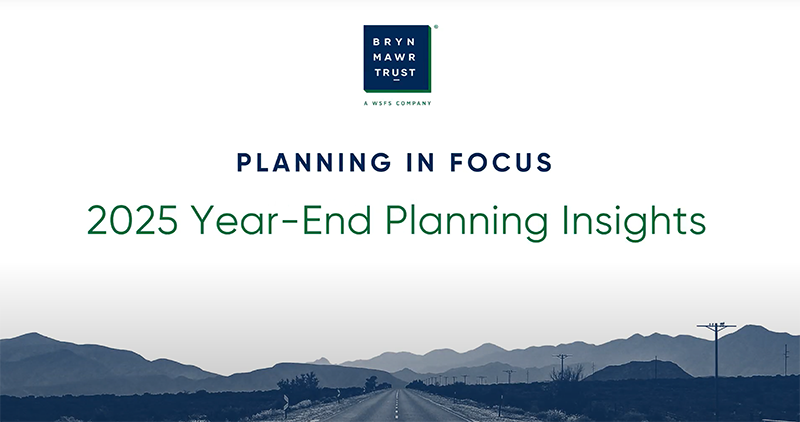Why Understanding Target Date Funds Matters More Than Ever

Most employees in 401(k) retirement plans are not professional investors, and they don’t need to be. However, in a retirement system that increasingly places responsibility on individuals to make informed investment decisions, having a basic understanding of your available options is essential to achieving long-term financial security.
One of the most common and impactful tools offered in today’s 401(k) plans is the Target Date Fund (TDF). These professionally managed funds are designed to simplify long-term investing by automatically adjusting their asset allocation over time. Typically, they move from a higher allocation to equities (stocks) toward a more conservative mix with bonds as the investor approaches a specific “target” retirement year. TDFs are now the default investment option in many employer-sponsored retirement plans and often the primary destination for automatic contributions.
The importance of understanding TDFs has grown significantly due to new provisions under the SECURE 2.0 Act, a federal law focused on retirement savings and retirement plan coverage. As of 2024, all new 401(k) and 403(b) plans are required to implement two key automatic features:
- Automatic Enrollment: Eligible employees are automatically enrolled at a minimum contribution rate of 3% of their pay unless they opt out.
- Automatic Escalation: Unless the participant opts out, contribution rates must automatically increase by 1% per year, up to at least 10% and no more than 15% of compensation.
These provisions mean that more workers will automatically save for retirement, and their contributions will likely be invested in a TDF by default. As such, it is increasingly important that participants understand what they are invested in, how their fund is designed, and whether the selected target date year aligns with their actual retirement plans.
The evolution of TDFs over the past 15 years also underscores the importance of being informed. In the wake of the 2008 financial crisis, the TDF industry reevaluated its approach to risk near retirement. Many fund providers revised their glide paths, the roadmap by which TDFs reduce equity exposure over time. Also, providers shifted to a “through retirement” strategy, which continues to gradually reduce equity exposure after age 65 rather than stopping abruptly at retirement. This design reflects the growing reality that Americans live longer and may spend 20 to 30 years in retirement. As of 2024, leading providers such as Vanguard, Schwab, TIAA, and American Funds follow a “through” glide path approach, de-risking portfolios well into participants’ 70s (Morningstar, 2024; Vanguard, 2024).
TDFs are labeled by the target retirement year and generally assume a retirement age 65. If you expect to retire significantly earlier or later than that, it’s important to verify that the vintage year of your TDF matches your actual plans. Otherwise, you may be taking on either too much or too little risk for your circumstances.
Academic research supports the thoughtful structure and evolution of modern TDFs. Adam Zhang, Assistant Professor of Finance at the University of Minnesota, (2023) finds that maintaining equity exposure beyond age 65 can improve long-term financial outcomes, particularly for middle- and lower-income investors who depend on their 401(k)s as their primary retirement savings. The University of Pennsylvania’s Warton School professor Oliva Mitchell and visiting scholar Stephen Utkus (2022) show that TDFs help reduce common investor errors, such as poor diversification and erratic allocation changes while helping build more stable portfolios over time. San Diego State University’s Byeong-Je An and the University of Michigan’s Kunal Sachdeva (2024) further highlight that many participants retire later than they originally expected, meaning that de-risking too early, based on incorrect assumptions, can reduce long-term portfolio growth and retirement readiness. These findings emphasize the value of well-structured TDFs in supporting retirement success through simplicity, automation, and effective risk management.
The TDF and 401(k) marketplace scale reflects just how central these funds have become to retirement in the United States. As of 2023, TDFs managed over $3.5 trillion in assets, up from only $5 billion in 2000. The broader defined contribution (DC) plan market, led by 401(k)s, now holds more than $7.3 trillion in assets and serves over 60 million active participants. With SECURE 2.0 driving automatic enrollment and escalation and increasing adoption among small and mid-sized employers, the U.S. DC market will surpass $10 trillion by 2030 (Investment Company Institute, 2024; Cerulli Associates, 2023).
Plan participants can take a few straightforward steps to ensure their default investments work for them.
- Confirm the target date of your TDF and make sure it aligns with your anticipated retirement age.
- Understand whether your fund follows a “to” or “through” glide path, as this will influence how much risk you’re taking after retirement.
- Revisit your plan annually, especially after major life changes, to ensure your investments still fit your goals.
- Clarify your options with your HR team or retirement plan provider.
Target Date Funds are not inherently too conservative or too aggressive. Instead, they are designed based on assumptions about retirement timing, longevity, and investor behavior. As Americans live longer and follow increasingly diverse retirement paths, it is more important than ever for participants to understand how these funds function and how they fit into a sustainable, personalized retirement strategy.
References
An, B.-J., & Sachdeva, K. (2024). Missing the target? Retirement expectations and target date funds. SSRN. https://ssrn.com/abstract=3981048
Mitchell, O. S., & Utkus, S. P. (2022). Target-date funds and portfolio choice in 401(k) plans. Journal of Pension Economics and Finance, 21(4), 519–536. https://doi.org/10.1017/S1474747221000263
Zhang, A. (2023). Before and after target date investing: The general equilibrium implications of retirement saving dynamics. SSRN. https://doi.org/10.2139/ssrn.4615844
Investment Company Institute. (2024). Quick facts on target date fund use in retirement plans. https://www.ici.org
Morningstar. (2024). 2024 Target-Date Strategy Landscape. https://www.morningstar.com
Vanguard. (2024). Vanguard Target Retirement Funds glide path and composition. https://investor.vanguard.com
Cerulli Associates. (2023). The Cerulli Edge – U.S. Retirement Edition, Q4 2023. https://www.cerulli.com
Begin your journey
Have questions?
Speak with an financial expert.







